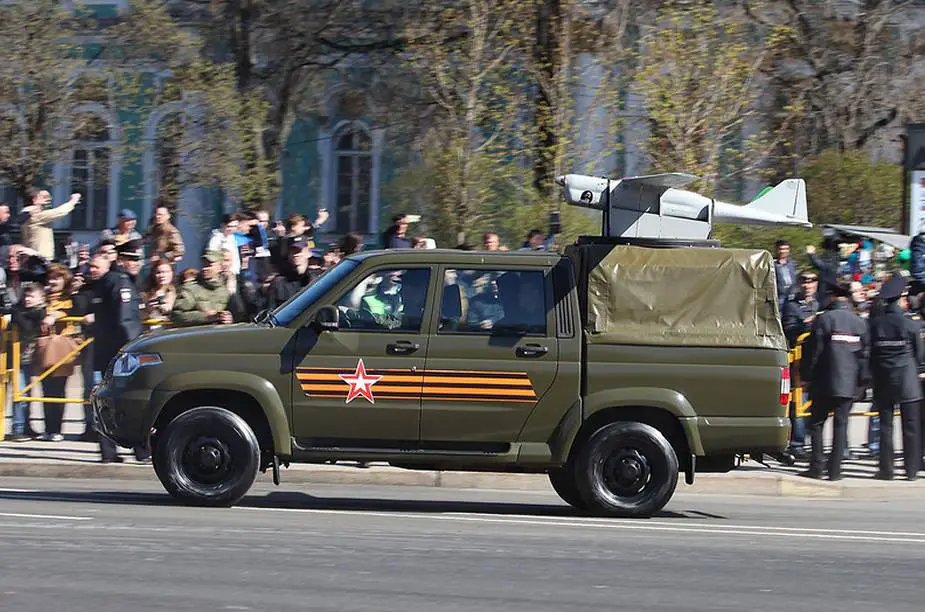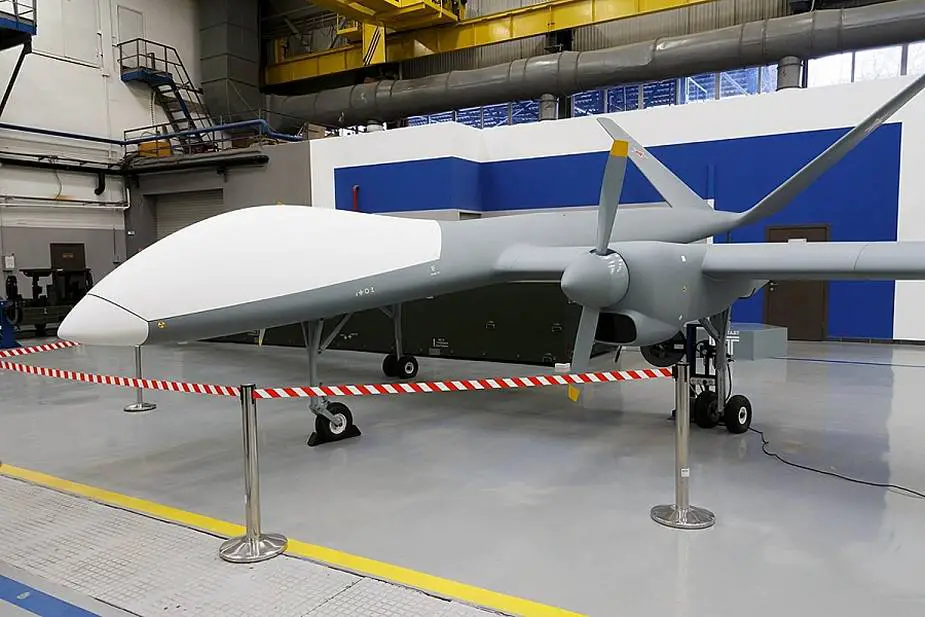Breaking news
Russian Inokhodets and Orlan-10 UAVs hold first live missile firing during Zapad-2021 exercise.
The Russian armed forces are operating several new unmanned combat aerial vehicles (UCAVs) during Zapad-2021 (West 2021) strategic exercise, according to the Russian Ministry of Defense (MoD): "The Inokohodets and Forpost UCAVs fitted with guided missiles and reconnaissance and observation systems were operated to support advancing troops for the first time," said the MoD in a news release.
Follow Army Recognition on Google News at this link

UAZ-23632-148-65 pickup with Orlan-10 UAV (Picture source: Vitaly Kuzmin)
During another scenario of the exercise, defending troops were supported by Inokhodets (Ambler), Lastochka (Swallow), and Orlan-10 UCAVs. "The vehicles used the newest Gran [Edge] 120 mm guided mortar mines with a laser seeker to support defending troops," said the MoD. The Lastochka vehicles fired high-explosive fragmentation (HE-Frag) and high-explosive anti-tank (HEAT) weapons against exposed manpower of a simulated enemy, while the Orlan-10s launched Mirotvorets (Peacekeeper) unguided weapons.

After being tested during Zapad-2021, the latest Inokhodets-RU strike drones (also known as Sirius unmanned combat aerial vehicles) is scheduled to be delivered to Russian troops from 2023, Russian Deputy Defense Minister Alexei Krivoruchko said at the Army-2021 International Military-Technical Forum (Picture source: Russian MoD)
On September 15, a source from the Russian defense industry told the TASS news agency that the Inokhodets UCAVs had successfully completed target designation missions. The vehicles’ accuracy of firing guided missiles had reached 100 percent, the source noted.
The Orion medium-altitude long-endurance (MALE) drone seems to become the centerpiece of the Russian military’s unmanned aerial component. According to its manufacturer, the Kronstadt Group, the Orion-E variant of the UCAV has a maximum take-off weight of 1,150 kg and carries a 250 kg payload. Its armament suite incorporates a range of laser-, satellite-, and TV-guided air-launched munitions, including guided bomb units with a weight of up to 50 kg each, guided missiles with a weight of up to 50 kg each, and free-fall bombs with a weight of up to 100 kg each. The Orion-E produces a cruise speed of 200 km/h, an endurance between 24 hours and 30 hours, and a flight altitude of up to 7,500 km. The Orion-E is powered by a 115 hp engine and can be operated at temperatures between -40 °C and +50 °C.
When being controlled via a radio channel, the UCAV has a range of 250 km. The integration of a satellite receiver will dramatically extend the range of the vehicle, Krosntadt Group Director General Sergei Bogatikov told the TASS news agency on September 2. The Orion-E UCAV is set to receive the newest Vikhr-M anti-tank guided missile (ATGM): the Kalashnikov Group, the manufacturer of the ATGM, considers adapting the weapon to the vehicle.

Forpost UCAV (Picture source : Vitaly Kuzmin)
© Copyright 2021 TASS / Army Recognition Group SPRL. All rights reserved. This material may not be published, broadcast, rewritten or redistributed.


























